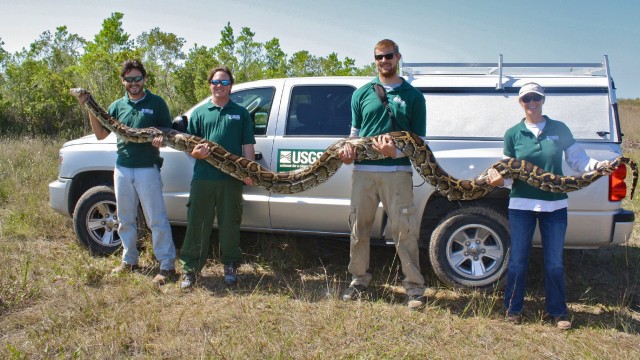
The list of “America’s Least Wanted” keeps growing. Garlic mustard was listed in 1991, red lionfish in 2000, and Burmese pythons in 2004. These three organisms join a long list of alien invaders to the Americas that began (according to the written record) with the arrival of the Nina, the Pinta, and the Santa Maria. While many of us might find things to enjoy about aliens -- like the murmurations of starlings, the fragrance of honeysuckle, or the Godzilla-like kudzu caricatures in our landscape -- ecologists are not amused. In fact, they're worried, wondering if the latest least-wanteds might be capable of triggering a cascading ecological collapse on a scale that will be visible in the future rock formations of our time.
The concept of a cascading collapse, when a minor incident unexpectedly triggers a major calamity, is not unique to the natural world.
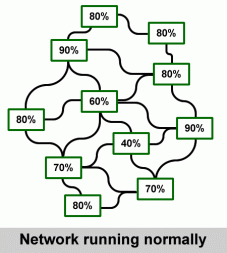
Ecologists worry that niches are like electrical junctions, where the loss of one could halt energy flow and collapse the entire ecosystem. Courtesy of Stickulator via Wikipedia.
The summer of 2013 marked the 10-year anniversary of the cascading collapse of the Northeast power grid. A simple spot of contact between a drooping power line and a tree branch in Walton, Ohio, was able to halt all electrical activity across eight states because a software bug kept an alarm system from working. It took an hour for the first unnoticed failure to trigger a second, and 40 minutes for the second to trigger an additional 15 failures. It took another 28 minutes for officials to begin cutting ties to the flailing system in Ohio, but by then it was too late. Three minutes later, railroads, traffic, television, cell phones, air conditioning, and industry from Ontario to Philadelphia went silent. It took less than three hours to put 50 million people in the dark.
Could invasive species like lionfish, pythons, and garlic mustard trigger a similar kind environmental “blackout”?
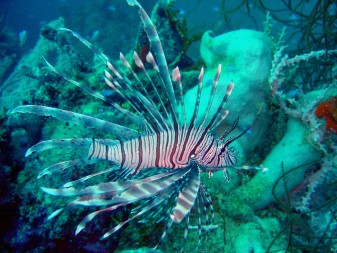
Red lionfish are dazzling, clothed in vibrant contrasting colors and armed with 13 neurotoxin-tipped spines. They add majesty to any home aquarium. But since lionfish were inadvertently released into the wild, they have spread from the tropical reefs off Florida to the temperate reefs off North Carolina. Vacuuming up lobsters, crabs, shrimp, wrasses, bogies, juvenile snapper, and juvenile grouper, they decimate the reef’s herbivores and leave the seaweed unchecked. Unbridled seaweed then flourishes and smothers the coral animals. Stifled corals eventually die and the physical structure of the reef community crumbles.
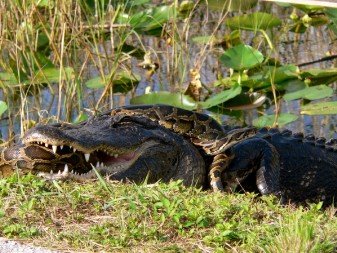
Burmese pythons sport an invisibility cloak of muted colors, come equipped with multiple rows of small, sharp teeth, and pack 150 pounds of muscle into a 21-foot ribbon of constricting skill. They impress the heck out of family and friends when draped across shoulders, but when they are inadvertently released into the Everglades they find a habitat they can plunder. Stomach analysis has revealed evidence of consumed mice, cotton rats, wrens, rabbits, squirrels, ibises, little blue herons, deer, bobcat, opossum, raccoon, and alligators. Pythons are squeezing the life out of the entire food web.
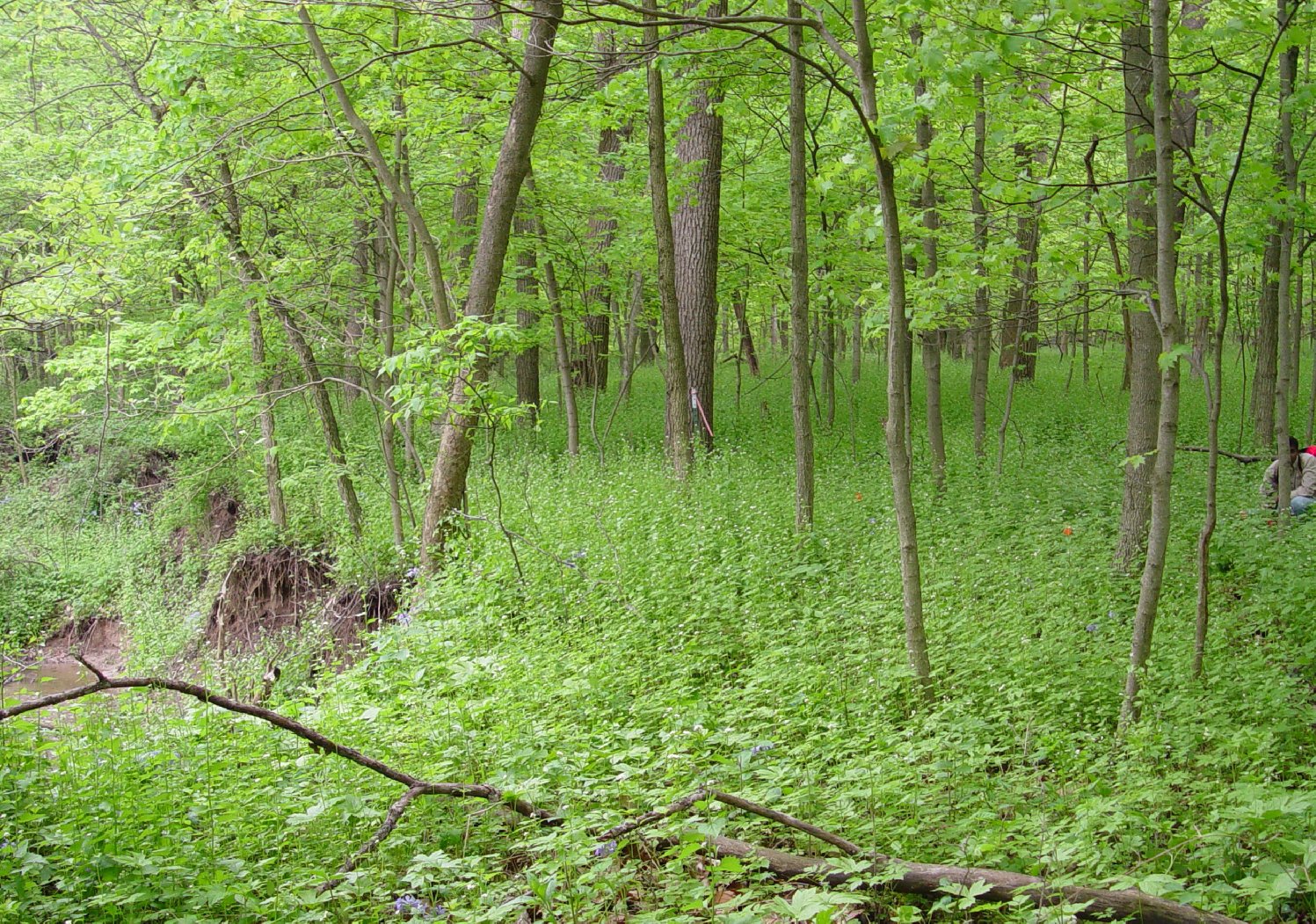
Garlic mustard lives most of its two-year life in low, tight bunches of overlapping heart-shaped leaves. First collected in Long Island in 1868, it was thought settlers brought it from Europe for medicinal purposes. During its second spring it bolts, blooms, and sets hundreds of seeds. Thriving in low light, stinking of garlic, and distasteful to deer, garlic mustard smothers moss, ferns, flowers, and the seedlings of future pine, oak, maple, hickory, ash, and beech trees. Once established, the odiferous oils repel the beneficial fungi in the soil that ensure the regeneration of oaks, maples, and beeches in the forest.